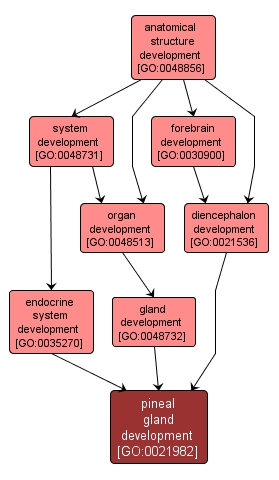GO TERM SUMMARY
|
| Name: |
pineal gland development |
| Acc: |
GO:0021982 |
| Aspect: |
Biological Process |
| Desc: |
The progression of the pineal gland over time from its initial formation until its mature state. The pineal gland is an endocrine gland that secretes melatonin and is involved in circadian rhythms. |
| Synonyms:
|
|

|
INTERACTIVE GO GRAPH
|














